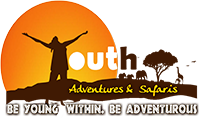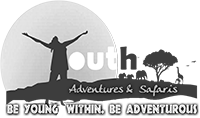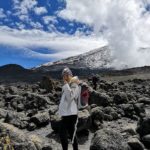6 Tips for Climbing and Summiting Mt Kilimanjaro
These are Tips for Climbing and Summiting Mt Kilimanjaro for turn your dream into a successful reality;
Choose your interest Kilimanjaro route
Principal there are 6 route which are Lemosho, Machame, Rongai, Umbwe, Marangu and Northern Circuit. When choosing a route, remember that they all lead to the same place – Uhuru Peak (5,895 meters/19,340 feet). Take a look at the Kilimanjaro trek comparison guide to find the best match for your interests, sleeping preference (huts or tents), budget, time and fitness level.
The cheapest is Marangu route 6 days and Marangu route 5 days also nick named as the “Coca Cola Route” because you sleep in huts along the way. This route is sometimes criticized for not having interesting landscapes, but we can vouch for the surprising beauty of the entirety of this route.
Kilimanjaro Climbing Gearing
Climbing Mount Kilimanjaro does not require a lot of technical or specialized mountain climbing gear. There is no need to spend a fortune on new gear for this trek, but a few key items are useful. Porters carry 15 kilos per person – this includes the weight of your sleeping bag.
What you need to bring with you:
If you don’t already own the items below, consider renting them in Moshi instead of buying them new. This will also lighten the weight of your luggage for flights and other travel.
• Sleeping bag – make sure you get the warmest one available (-20 to -30 Celsius)
• Waterproof pants and jacket
• Walking sticks – used mostly on the way down, but can also offer support on the ascent
• Gaiters – particularly if you expect snow in and around the peak (if you are trekking in dry season, they may not be necessary)
High Altitude Sickness
You will find yourself gaining a significant amount of elevation in a short period of time. Everyone’s body reacts differently to altitude. Some people are more susceptible to altitude sickness than others. Here are some things to help your body deal with altitude. Taking these steps will also build your confidence and reduce any anxiety you might have about your body reacting badly to high elevation.
• Drink water. Then drink some more. And then some more. You should drink a minimum of 3 liters of water per day. Guides and porters will all tell you: water is the single best altitude sickness prevention medicine for your body.
• Pole Pole (Slowly, Slowly). This is the key mantra for all climbers. Every guide and porter will remind you of this from the moment you begin the climb. Why? When you move slowly, you conserve energy and allow your body adequate time to adjust to the changes in elevation.
• Sleep and eat. Both of these things will become more difficult as you climb higher in elevation, so try to stock up on them in lower altitudes. Especially at lower altitudes, force yourself to eat. For sleep, consider bringing a good set of earplugs to eliminate outdoor noise (if you are sleeping in tents) and all those toilet visits that your mates are making (if you are sleeping in huts).
Finally, as a confidence boost, your guide and assistant guides will be watching out for you and paying attention for signs of altitude sickness. Follow their advice to the letter – they have lots of experience in this – and your experience will be the better for it.
Both physical and mental challenge
Climbing Mt. Kilimanjaro is plenty physically challenging and summit day can feel especially brutal. But Kilimanjaro is every bit mental – altitude anxiety, fear of not making it — as it is physical.
When those voices of doubt creep in when altitude sickness begins to hit, try to put them in their place by focusing at the task at hand and using the support of your climbing team. Dig deep inside you to find the energy and perseverance to continue. Slowly, slowly.
Enjoy the trek
Everyone’s goal is to get to the top, to Uhuru Peak. But Mount Kilimanjaro is more than just getting to the top. Look around as you climb. Take a pause and look back to reflect on how far you’ve come. Your position above the clouds is something to be savored.
Mount Kilimanjaro offers beautiful surroundings, a mind-clearing hike, camaraderie with people around you, changing landscapes, support of the trekking team and the satisfaction of overcoming challenges.



